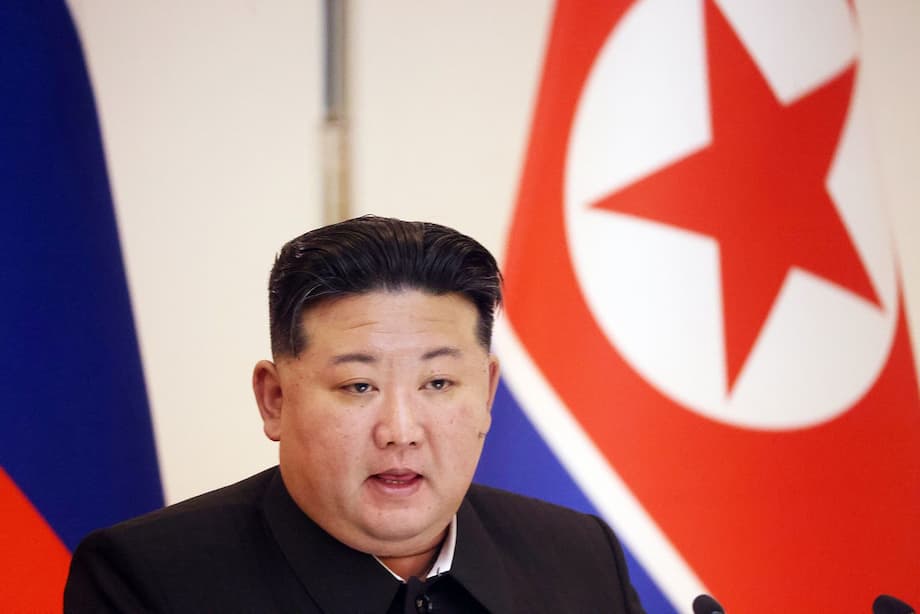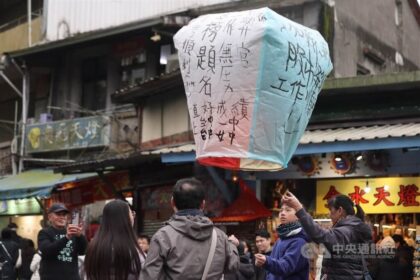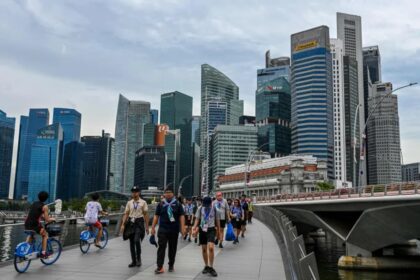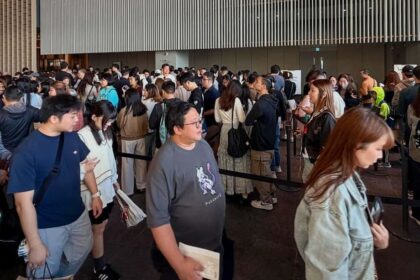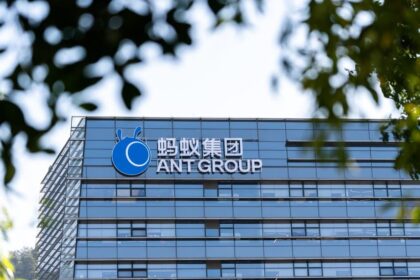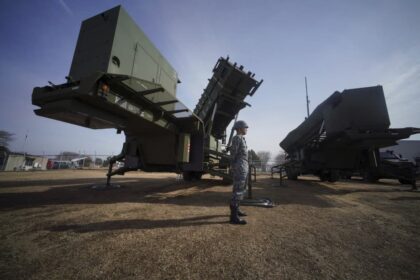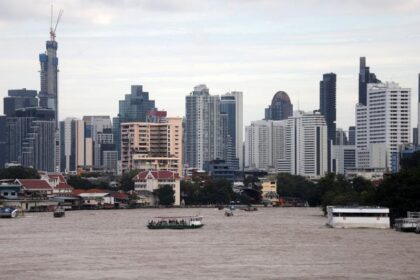North Korea’s Sinpung-dong Missile Base: A Hidden Threat Near China
In a revelation that has sent ripples through the international security community, a previously undisclosed North Korean missile base has been identified near the country’s border with China. The Sinpung-dong Missile Operating Base, located just 27 kilometers (about 17 miles) from the Chinese frontier in North Pyongan Province, is believed to house a brigade-sized unit equipped with up to nine nuclear-capable intercontinental ballistic missiles (ICBMs) and their mobile launchers. This discovery, detailed in a new report by the Washington-based Center for Strategic and International Studies (CSIS), underscores the growing sophistication and secrecy of North Korea’s nuclear weapons program—and the mounting challenges it poses to East Asia and the United States.
- North Korea’s Sinpung-dong Missile Base: A Hidden Threat Near China
- How Was the Sinpung-dong Base Discovered?
- What Makes Sinpung-dong Strategically Significant?
- What Missiles Are Stored at Sinpung-dong?
- Why Was Sinpung-dong Kept Secret?
- Implications for Regional and Global Security
- How Does Sinpung-dong Fit Into North Korea’s Missile Strategy?
- International Response and Future Prospects
- In Summary
How Was the Sinpung-dong Base Discovered?
The existence of the Sinpung-dong base was confirmed through a combination of high-resolution satellite imagery, interviews with North Korean defectors and officials, declassified documents, and open-source intelligence. CSIS’s Beyond Parallel project, which specializes in North Korean military analysis, led the investigation. The base had never been declared by North Korea and had not featured in any previous denuclearization negotiations with the United States or South Korea.
Construction on the base began around 2004, and it became operational by 2014. Since then, satellite images show that the facility has been well-maintained and continues to undergo improvements, likely reflecting ongoing advancements in North Korea’s missile technology.
What Makes Sinpung-dong Strategically Significant?
The Sinpung-dong base is part of North Korea’s so-called “strategic ballistic missile belt,” a network of 15 to 20 undeclared missile bases and warhead storage facilities spread across the country. These sites form the backbone of Pyongyang’s evolving ballistic missile strategy and its expanding nuclear deterrence capabilities.
What sets Sinpung-dong apart is its proximity to China. By situating such a critical facility so close to a major ally and global power, North Korea appears to be leveraging the political and strategic risks associated with any potential military strike. As Leif-Eric Easley, a professor at Ewha University in Seoul, explained, countries like the United States might hesitate to target the base for fear that any fallout or escalation could impact China and trigger a broader regional crisis.
“By building bases so close to China, North Korea may also seek to leverage the political risk and uncertainty of Beijing’s response in order to deter an attack,” said Easley.
This location also complicates intelligence gathering and preemptive strike planning by adversaries, making Sinpung-dong a particularly challenging target.
Facility Layout and Concealment
The base is situated in a narrow mountain valley, cut in half by a stream, and covers approximately 22 square kilometers—an area larger than New York’s John F. Kennedy International Airport. Its design is similar to other North Korean missile bases, with dispersed facilities for security and operational flexibility. Key features include:
- Entrance checkpoints and headquarters buildings
- Warehouses and missile support facilities
- Hardened missile checkout shelters and underground facility entrances built into the mountainside
- Drive-through bunkers and earth-bermed support structures, possibly for rapid reaction launches or storage
- Small housing units for personnel
Many of these structures are deliberately camouflaged with trees and bushes, making them difficult to detect except during winter when vegetation is sparse. The base lacks significant fixed air defense positions but is covered by North Korea’s national air defense network and likely has its own organic air defense units.
What Missiles Are Stored at Sinpung-dong?
While the exact missile systems stationed at Sinpung-dong remain uncertain, CSIS analysts believe the facility may host between six and nine Hwasong-15 or Hwasong-18 ICBMs, or possibly a new, undisclosed model. Both the Hwasong-15 and Hwasong-18 are considered advanced, nuclear-capable missiles with the potential to reach the continental United States.
The Hwasong-15 is a liquid-fueled missile first tested in 2017, while the Hwasong-18 is a solid-fueled ICBM, which offers significant operational advantages. Solid-fuel missiles can be launched more quickly and are harder to detect and intercept, as they do not require fueling immediately before launch. This makes them a more credible and survivable deterrent.
In addition to the missiles themselves, the base is equipped with transporter-erector-launchers (TELs)—large, mobile vehicles that can quickly move missiles to pre-surveyed launch sites during a crisis. This mobility further complicates efforts to track and neutralize North Korea’s missile forces.
How Would the Base Operate in a Crisis?
According to the CSIS report, during times of crisis or war, the launchers and missiles would exit the base, rendezvous with special warhead storage or transportation units, and conduct launch operations from dispersed, pre-surveyed sites. This “shoot-and-scoot” strategy is designed to maximize survivability and make it difficult for adversaries to destroy North Korea’s missile arsenal in a first strike.
“Current assessments are that during times of crisis or war, these launchers and missiles will exit the base, meet special warhead storage or transportation units, and conduct launch operations from dispersed pre-surveyed sites,” the CSIS report noted.
Why Was Sinpung-dong Kept Secret?
North Korea has a long history of concealing its military capabilities from the outside world. The country has never declared the existence of Sinpung-dong or any of its other undeclared missile bases, despite participating in multiple rounds of denuclearization talks with the United States and South Korea. Previous negotiations focused on more visible sites, such as the Sohae Satellite Launching Station, rather than these hidden facilities.
By keeping Sinpung-dong and similar bases secret, North Korea preserves its ability to surprise adversaries and maintain a credible second-strike capability. This secrecy also complicates diplomatic efforts, as it is difficult to verify the full extent of Pyongyang’s arsenal or ensure meaningful arms control agreements.
Implications for Regional and Global Security
The discovery of Sinpung-dong comes at a time of heightened tension on the Korean Peninsula and growing concern about North Korea’s nuclear ambitions. Since the collapse of the 2019 summit between Kim Jong Un and then-U.S. President Donald Trump, North Korea has accelerated its weapons development, conducted numerous missile tests, and declared itself an “irreversible nuclear state.”
Estimates from the Stockholm International Peace Research Institute suggest that North Korea currently possesses about 50 nuclear warheads and has enough fissile material to produce up to 40 more. The country’s expanding missile capabilities, combined with its growing stockpile of nuclear weapons, represent a significant threat to regional stability and global security.
China’s Dilemma
The proximity of Sinpung-dong to the Chinese border places Beijing in a difficult position. While China is North Korea’s most important ally and trading partner, it has expressed concern about Pyongyang’s nuclear program and the risk of instability on its doorstep. The possibility that fallout from a military strike on Sinpung-dong could affect Chinese territory may deter the United States and its allies from targeting the base, but it also raises the risk of unintended escalation.
“Public knowledge of such bases might prompt more Chinese observers to resent North Korean attempts at strategic entanglement,” said Leif-Eric Easley, highlighting the potential for friction between the two countries.
North Korea–Russia Cooperation
In recent years, North Korea has deepened its ties with Russia, particularly since Moscow’s invasion of Ukraine. Western intelligence agencies report that Pyongyang has sent over 10,000 troops and significant quantities of artillery and missiles to Russia, primarily to the Kursk region. In return, Russia is believed to be providing North Korea with technical assistance on advanced space and missile technology. This cooperation could further accelerate North Korea’s missile development and complicate efforts to contain its nuclear program.
How Does Sinpung-dong Fit Into North Korea’s Missile Strategy?
The Sinpung-dong base is just one component of a broader network of missile operating bases, storage facilities, and support sites that form the backbone of North Korea’s strategic deterrent. Other undeclared bases, such as Hoejung-ni, Sangnam-ni, and Yongnim, have also been identified by analysts. Together, these facilities enable North Korea to disperse its missile forces, enhance their survivability, and maintain a credible threat against both regional and intercontinental targets.
North Korea’s missile strategy emphasizes mobility, concealment, and the ability to launch from multiple locations. By investing in solid-fuel ICBMs and mobile launchers, Pyongyang is seeking to ensure that its nuclear forces can survive a preemptive strike and retaliate if necessary. This approach complicates missile defense planning and increases the risk of miscalculation during a crisis.
International Response and Future Prospects
The revelation of Sinpung-dong’s existence is likely to intensify calls for greater transparency and renewed diplomatic engagement with North Korea. However, Pyongyang has repeatedly rejected the idea of denuclearization talks, insisting that its nuclear status is non-negotiable. Kim Yo Jong, the influential sister of Kim Jong Un, recently stated that any attempt to deny North Korea’s status as a nuclear weapons state would be “thoroughly rejected.”
Meanwhile, the United States, South Korea, and Japan have strengthened their security cooperation in response to North Korea’s missile tests and provocative rhetoric. Joint military exercises and enhanced missile defense deployments are part of a broader effort to deter North Korean aggression and reassure allies in the region.
Yet, the presence of secret bases like Sinpung-dong highlights the limitations of current arms control and nonproliferation efforts. Without comprehensive verification and transparency, it will remain difficult to assess the true scope of North Korea’s capabilities or to negotiate meaningful limits on its arsenal.
In Summary
- The Sinpung-dong Missile Operating Base is a newly revealed, undeclared North Korean facility near the Chinese border, believed to house up to nine nuclear-capable ICBMs and their mobile launchers.
- The base’s proximity to China complicates potential military responses and may be intended to deter attacks by raising the risk of Chinese involvement.
- Sinpung-dong is part of a broader network of 15 to 20 secret missile bases that form the backbone of North Korea’s nuclear deterrent strategy.
- The facility is designed for mobility and concealment, with underground structures and camouflaged entrances, making it difficult to detect and target.
- North Korea’s expanding missile and nuclear capabilities, combined with deepening ties to Russia, pose a growing threat to regional and global security.
- The discovery underscores the challenges of arms control and the need for renewed diplomatic efforts, even as Pyongyang insists on its status as an irreversible nuclear state.


